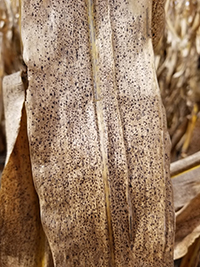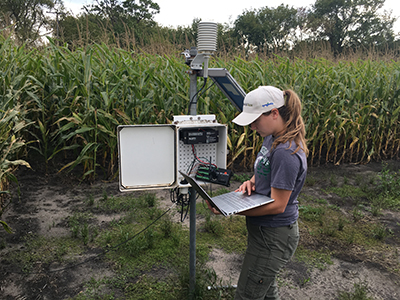A growing threat to corn around the world, tar spot has had a significant impact on United States corn production. From 2018 to 2020, the disease resulted in a loss of 242.6 million bushels and this number is expected to grow after the 2021 season.

Tar spot of corn was first spotted in Mexico in 1904. It spread to 15 additional countries throughout Central and South America and the Caribbean and made it to the United States in 2015 and Canada in 2020. When environmental conditions are ideal for infection, tar spot can result in yield losses of up to 100 percent.
To combat this growing threat, a group of 22 plant pathologists from 12 institutions have compiled a recovery plan that reviews the current knowledge and the future needs of tar spot, with the intention of mitigating the disease’s impact. They used new technology to monitor tar spot onset and progress in real time and also worked closely with plant pathologists across North America to compare note.
“This disease outbreak highlights the importance of state-based land grant University Extension plant pathologists who worked together to enable communication across state lines in tracking this recently introduced disease,” said Dr. Darcy Telenko, the corresponding author on the story. By working together, they were able to quickly disseminate the best management practices found in evidence-based

research.
“The ongoing research has real-world impact on U.S. agricultural as this disease is leading to significant yield loss in the Midwest and it continues to spread to new corn production areas in the U.S. and Canada,” Telenko added.
This recovery plan demonstrates the importance of continued collaboration between university Extension, plant disease diagnostic labs, the USDA, and industry to monitor and identify new and emerging plant pathogens that could impact US agriculture.
